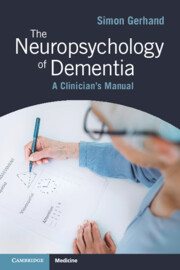Book contents
- The Neuropsychology of Dementia
- The Neuropsychology of Dementia
- Copyright page
- Contents
- Preface
- Acknowledgements
- Section 1 Essential Background Knowledge
- Chapter 1 Overview
- Chapter 2 Diagnosing Dementia
- Chapter 3 Functional Neuroanatomy
- Chapter 4 Neuropsychological Assessment in Dementia Diagnosis
- Section 2 Diagnosing Different Types of Dementia
- Section 3 Intervention
- Section 4 Recent Developments/Contemporary Issues
- Index
- References
Chapter 1 - Overview
from Section 1 - Essential Background Knowledge
Published online by Cambridge University Press: 25 October 2024
- The Neuropsychology of Dementia
- The Neuropsychology of Dementia
- Copyright page
- Contents
- Preface
- Acknowledgements
- Section 1 Essential Background Knowledge
- Chapter 1 Overview
- Chapter 2 Diagnosing Dementia
- Chapter 3 Functional Neuroanatomy
- Chapter 4 Neuropsychological Assessment in Dementia Diagnosis
- Section 2 Diagnosing Different Types of Dementia
- Section 3 Intervention
- Section 4 Recent Developments/Contemporary Issues
- Index
- References
Summary
This chapter provides an introduction to dementia and mild cognitive impairment (MCI). It covers the incidence and prevalence of the most common forms of dementia, and explains the underlying causes in terms of different types of proteinopathy. Risk factors for development of dementia are reviewed, along with protective factors. The role of age is also considered as different subtypes of dementia peak during different age ranges. The contribution of genetics and epigenetics is reviewed, along with the importance of blood supply, sleep, and inflammation. The theory of cognitive and neuronal reserve is introduced as one of the factors which can predict which people are more or less likely to develop dementia and MCI. Connectomics and the arrangement of the brain into circuits is covered, along with developments in neuro-imaging.
Keywords
- Type
- Chapter
- Information
- The Neuropsychology of DementiaA Clinician's Manual, pp. 1 - 14Publisher: Cambridge University PressPrint publication year: 2024

